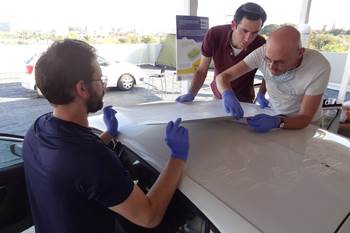Search Results
Showing 31 – 40 of 453 results
The wind energy market has long been considered the world’s largest market, by volume, for glass fiber-reinforced polymer (GFRP) composites — and increasingly, carbon fiber composites — as larger turbines and longer wind blades are developed, requiring higher performance, lighter weight materials. The outer skins of wind and tidal turbine blades generally comprise infused, GFRP laminates sandwiching foam core. Inside the blade, rib-like shear webs bonded to spar caps reinforce the structure. Spar caps are often made from GFRP or, as blade lengths lengthen, pultruded carbon fiber for additional strength.
Skydweller is a large-scale autonomous aircraft made for long-duration missions.
Duty will share the ways in which IACMI, over its 10-year history, has led to successful and commercialized composites technologies in the automotive industry.
Composite pressure vessel supplier contributes to 75-meter vessel that will be powered by wind and solar power and features advanced power systems like hydrogen.
American Clean Power Association latest findings indicate that 2024’s second quarter of solar, energy storage and wind additions will set the stage for a record year.
JetCam software streamlines nesting performance for composite ply assembly and cutting for the team’s 100th solar vehicle.
CAMX 2024: TeXtreme is showcasing its TeXtreme 0/90 woven fabrics, demonstrated through customer Kerberos Engineering’s satellite solar array.
Community-led Accelerator Program will contribute to the procurement of low-volume tooling and the buildout of product-intent BinC, adding to $100+ million received over the last couple of years.
CAMX 2025: Rock West strives to support next-gen space-grade materials and designs, spotlighted through the Strato product line, ecommerce supply services and two CAMX Theater presentations.
Passive cooling technology can reduce interior temperatures 5-13°C, offering weight, cost and CO2 benefits for cars, construction, aircraft and more.
Specialized composite bodies are being produced in Modena, Italy, for Aptera’s BinC vehicle, enabling eventual manufacturing ramp-up of 40 vehicles/day to meet demand targets.










